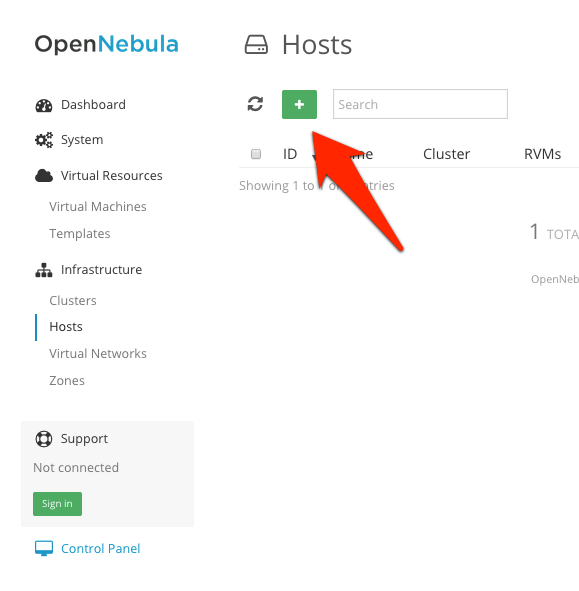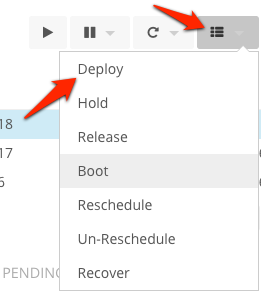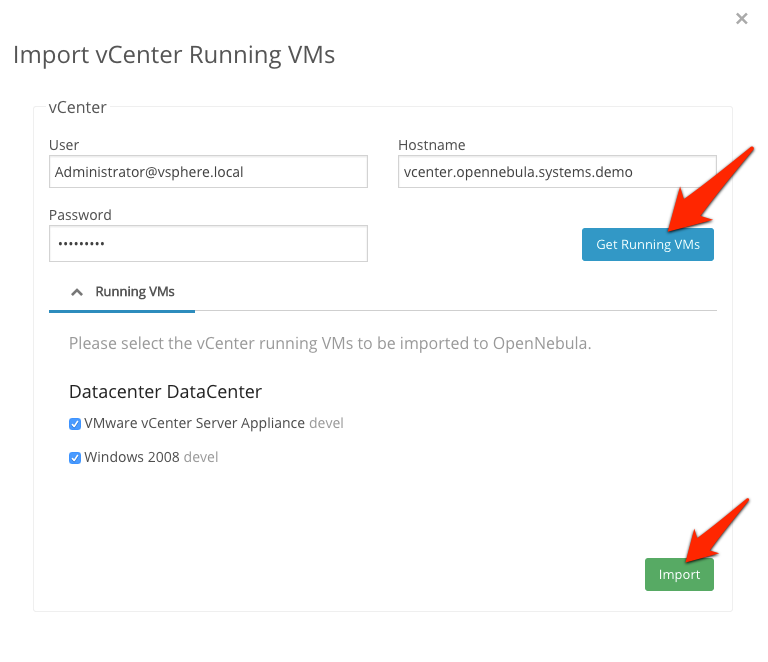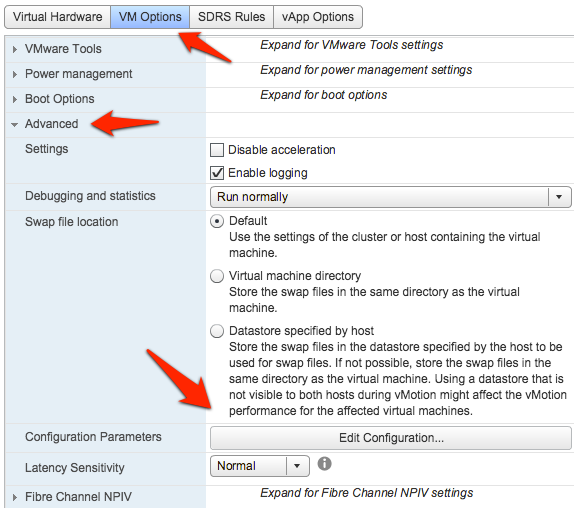Import Existing vCenter¶
Importing a vCenter infrastructure into vOneCloud can be carried out easily through the Sunstone Web UI. Follow the next steps to import an existing vCenter as well as any already defined VM Template and Networks.
You will need the IP or hostname of the vCenter server, as well as an administrator credentials to successfuly import resources from vCenter.
Step 1. Sunstone login¶
Log in into Sunstone as vOneCloud, as explained in the previous section.
Step 2. Acquire vCenter Resources¶
In Sunstone, proceed to the Infrastructure --> Hosts tab and click on the “+” green icon.

Warning
vOneCloud does not currently support spaces in vCenter cluster names
In the dialog that pops up, select vCenter as Type in the dropdown. You now need to fill in the data according to the following table:
| Hostname | vCenter hostname (FQDN) or IP address |
| User | Username of a vCenter user with administrator rights |
| Password | Password for the above user |

After the vCenter cluster is selected in Step 2, a list of vCenter VM Templates and both Networks and Distributed vSwitches will be presented to be imported into vOneCloud. Select all the Templates, Networks and Distributed vSwitches you want to import, and vOneCloud will generate vOneCloud VM Template and Virtual Networks resources representing the vCenter VM templates and vCenter Networks and Distributed vSwitches respectively.
Additionally, these vOneCloud VM templates can be edited to add information to be passed into the instantiated VM. This process is called Contextualization.
Also, Virtual Networks can be further refined with the inclusion of different Address Ranges. This refinement can be done at import time, defining the size of the network one of the following supported Address Ranges:
- IPv4: Need to define at least starting IP address. MAC address can be defined as well
- IPv6: Can optionally define starting MAC adddress, GLOBAL PREFIX and ULA PREFIX
- Ethernet: Does not manage IP addresses but rather MAC addresses. If a starting MAC is not provided, vOneCloud will generate one.
The networking information will also be passed onto the VM in the Contextualization process.
Regarding the vCenter VM Templates and Networks, is important to take into account:
- vCenter VM Templates with already defined NICs that reference Networks in vCenter will be imported without this information in vOneCloud. These NICs will be invisible for vOneCloud, and therefore cannot be detached from the Virtual Machines. The imported Templates in vOneCloud can be updated to add NICs from Virtual Networks imported from vCenter (being Networks or Distributed vSwitches).
- We recommend therefore to use VM Templates in vCenter without defined NICs, to add them later on in the vOneCloud VM Templates
(Optional) Step 3. Import / Reacquire Virtual Machines, VM Templates and Networks¶
If the vCenter infrastructure has running Virtual Machines, vOneCloud can import and subsequently manage them. To import running vCenter VMs follow the next steps:
Note
Special attention deserves point 3, imported VMs will appear in Pending state for a short while until the scheduler passes them to Running automatically.
- Proceed to the Virtual Resources --> Virtual Machines tab and click on the “Import” green icon. Fill in the credentials and the IP or hostname of vCenter and click on the “Get Running VMs” button.
- You will now see running vCenter VMs that can be imported in vOneCloud (only VMs running on previously imported cluster will be shown for import). Select the VMs that need to be imported one and click import button.
- VMs will appear in the Pending state in vOneCloud until the scheduler automatically passes them to Running, there is no need to force the deployment. If there is over commitment of CPU and/or memory in vCenter, manual deploy of the imported VMs is neccesary to reach the running state. Select the imported VM in Pending state in vOneCloud and click on the deploy button, selecting afterwards the vCenter host from which the VM has been imported

- After the VMs are in the Running state, you can operate on their lifecycle, asign them to particular users, attach or detach network interfaces, create snapshots, etc. All the funcionality that vOneCloud supports for regular VMs is present for imported VMs.

The following operations cannot be performed on an imported VM:
- Delete –recreate
- Undeploy (and Undeploy –hard)
- Migrate (and Migrate –live)
- Stop
vCenter VM Templates can be imported and reacquired using a similar procedure from the Import button in Virtual Resources --> Templates. Moreover, Networks and Distributed vSwitches can also be imported / reacquired from using a similar Import button in Infrastructure --> Virtual Networks.
Note
The vCenter VM Templates, Networks, Distributed vSwitches and running Virtual Machines can be imported regardless of their position inside VM Folders, since vOneCloud will search recursively for them.
Note
Running VMs with open VNC ports are imported with the ability to stablish VNC connection to them via vOneCloud. To activate the VNC ports, you need to right click on the VM while it is shut down and click on “Edit Settings”, and set the remotedisplay.* settings show in the following images.


Step 4. Check Resources¶
Now it’s time to check that the vCenter import has been succesful. In Infrastructure --> Hosts check vCenter has been imported, and if all the ESX hosts are available:
Note
Take into account that one vCenter cluster (with all its ESX hosts) will be represented as one vOneCloud host.

Step 5. Instantiate a VM Template¶
Everything is ready! Now vOneCloud is prepared to manage Virtual Machines. In Sunstone, go to Virtual Resources --> Templates, select one of the templates imported in Step 2 and click on Instantiate. Now you will be able to control the lifecycle of the VM.
More information on available operations over VMs here.